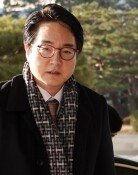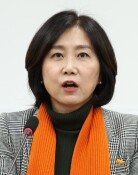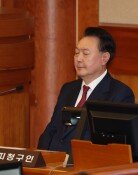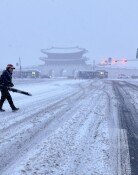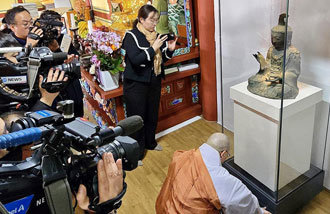Goryeo Buddha statue to return to Japan after 100-day public display
Goryeo Buddha statue to return to Japan after 100-day public display
Posted January. 25, 2025 07:32,
Updated January. 25, 2025 07:32
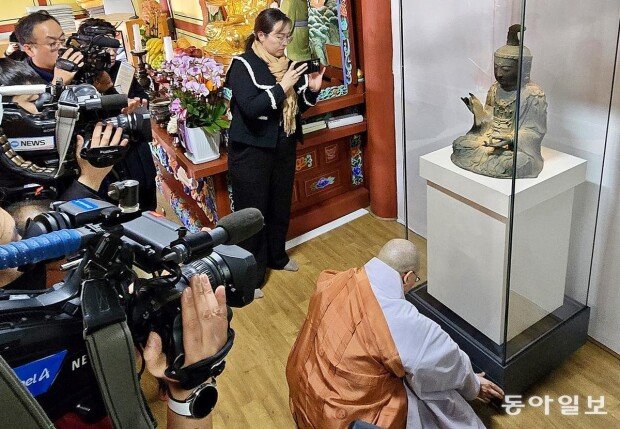
Head monk, Wonwoo of Buseoksa Temple, located in Seosan, South Chungcheong Province, mentioned at the welcoming ceremony held on Friday announcing the visit to the Goryeo Dynasty's Seated Gilt-bronze Avalokitesvara Statue. Created in the 14th century and then taken to Japan, the Buddhist sculpture was retaken by Korean thieves in October 2012 from Kannonji Temple in Tsushima Island, Japan. After years of legal battle, it was concluded that the sculpture be returned to Japan. However, Buseoksa Temple requested Kannonji's permission to temporarily host the statue for ceremonial purposes, which Kannonji agreed to. The statue will be exhibited to the public for 100 days, from January 25 until May 5, the Buddha's Birthday. This marks the statue’s return to Buseoksa Temple for the first time in 647 years, based on researchers’ estimates that it was looted by Japanese raiders in 1378.
Banners hang at the entrance of the Buseok Temple welcoming the sculpture’s return home, with numerous devotees flocking to see the statue even before the arrival. Kim By-yong (74) prayed as he noted that the Korean statue returning to Japan once again feels heartbreaking and that the sculpture should definitely return to us Koreans someday. After departing the National Research Institute of Cultural Heritage (NRICH) in a vibration-free vehicle to Yuseong District, Daejeon, the statue arrived in the Buseoksa Temple in the afternoon before being relocated to the sermon hall.
This 50.5-centimeter-high statue weighing 38.6 kilograms was designated as Kapan's tangible cultural heritage in 1973. The Kannonji Temple requested to return the statue after it was discovered to have been smuggled into Korea. Still, the Buseoksa Temple filed an ownership lawsuit to the court, arguing that the statue was originally Korean but looted by the Japanese. An original written note from 1330 was also found inside the sculpture that it was built to be enshrined in the Buseoksa Temple. However, the Supreme Court ruled on October 2023 that the “statute of limitations on ownership had expired” and ordered the statue to be returned to Japan.
After the public display, the statue will be returned to the NRICH before May 11 and delivered back to Japan. Former head monk Sekko Tanaka of the Kannonji Temple, who participated in both welcoming and relocation ceremonies, noted that he was grateful once again to all the stakeholders who worked hard to ensure the return of the statue to Japan, including the governments, national assemblies of both Korea and Japan, and the Korean Buddhist Jogye Order.
Jong-Yeob JO jjj@donga.com



